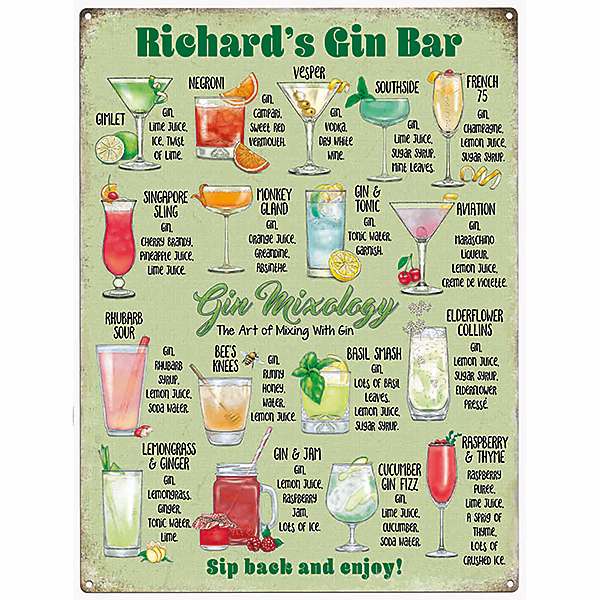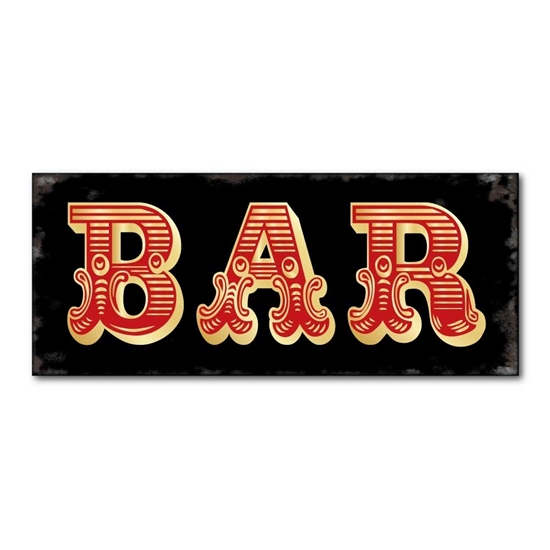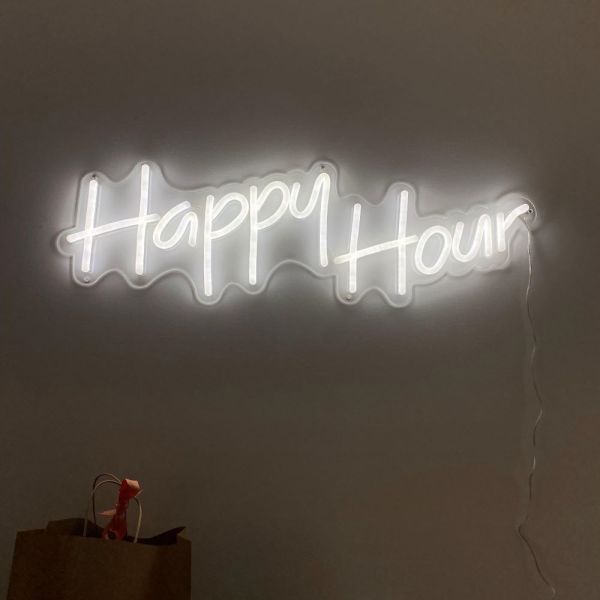Great Advice To Deciding On Bar Signs
Wiki Article
How Do Bar Signs Vary In Terms Of Size?
There are various sizes for bar signs depending on the function of their design, where they're placed, and how they look. Here is a brief explanation on how the size of bar signs affects their effectiveness and awe. Large Signs
Use for: to focus attention on a specific area and serve as an important focal place.
Uses include: exterior signage, main branding or walls with a focal point.
Placement - Most often put outside, above huge entrances or on large walls to draw patrons.
Example: large neon signage large vintage-style signs, or massive wall-type signs.
2. Medium Signs
Use to display information or to improve the decor of a room without overpowering it.
Uses for: Signs for direction, menu boards, and promotional displays.
The location of the sign: Ensure that the signage is visible, but not too overwhelming.
Examples: Metal signs that feature the logo of your bar or themed signs or medium-sized boards for specials.
3. Small Signs
Useful: To add subtle decorative elements or offer specific details.
Uses Table signs, small decorative pieces, or labels.
The table or shelves, or in displays where close-up view is expected.
For example: Table number signs, or even small frame quotes.
Size Factors
Visibility
Large Signs - designed to be visible from a distance, they are ideal for attracting the attention of passers-by and establishing the bar's presence.
Medium Signs: Balances the need for visibility and space efficiency, providing important information without overpowering the décor.
Small Signs (small signs) Small Signs (small signs): These are great for information that is intimate and close-up that can be displayed at eye level.
Proportion
The size of the signs should be in proportion to the area to avoid overwhelming small areas. Perfect for large or open areas.
Medium Signs: Fits well in most interior spaces, providing versatility in placement.
Small Signs are perfect for adding a little detail to small areas and making them fit into smaller spaces without causing chaos.
Impact
Large-sized signs: Makes a bold and powerful statement. This is an important factor in branding. They're often used to set the mood at the bar.
Medium Signs (Medium Size) Creates a balance between visual appeal and decor. Helps create a sense of ambience while providing vital information.
Small Signs: Adds charm and detail, contributing to a multi-layered and rich visual experience.
Practicality
Large Signs (Large) Large Signs (Large): They require a lot of mounting options and are typically more costly due to their size.
Medium Signs are easy to install, reposition and allow for modifications to the design.
Small Signs. Very versatile, simple to update and replace. Great for busy environments.
Functionality
Large Signs: Primarily functional to increase visibility and attract attention.
Medium Signs are a great source of information as well as aesthetic appeal.
Small Signs: Mainly used to provide information in a clear manner, they contribute to the overall design and decor with a subtle approach.
The size of bar signage is determined by their function as well as the design and effect they wish to create on customers. The signs can contribute to the overall atmosphere and flow of the bar when they are properly balanced. Check out the most popular bar sign hanging recommendations for website info including pub sign hanging, small pub signs, small pub signs, personalised outdoor pub signs, pub signs for garden bar, to the pub sign, make your own bar sign, signs for garden bar, pub sign hanging, bar signs for garden and more.

What Are The Differences Between Bar Signs With Regard To The Installation And Mounting?
Bar signs vary in terms of mounting and installation depending on their style dimensions, weight, place of installation, and intended purpose. This article will provide a comprehensive overview of the various mounting and installing techniques for bar signs. 1. Wall-mounted displays
Characteristics: Fixed directly on walls.
Methods:
Screws and Anchors: Common for larger signs (metal wood) to make sure they are stable.
Adhesive strip: For temporary or lighter installations as well as signs (foamboard and acrylic).
Brackets: They are utilized for signs that must extend from the wall to provide better visibility.
Uses: Indoor decor, menu boards, directional signs.
Benefits: It is easily adjustable, secure, and prominent display.
It is difficult to reposition and it can cause damage to walls.
2. Hanging Signs
Particularities: Ceilings suspended from the ceiling or overhangs.
Methods:
Chains: strong and flexible, perfect for heavy signs.
Cables: Sleeker design typically used in modern designs.
Rods: Provide a rigid support structure.
Uses: Ceiling decor, directional signs, overhead promotional signs.
Benefits : Uses vertical space effectively and can be attractive.
Disadvantages : Needs to be secured by ceiling anchors. It can sway if not properly stabilized.
3. Freestanding Signs
The main characteristic is that it does not attach to any other structure. The base or stand.
Methods:
A-Frames can be folded and carried around. They are often used to advertise along the street.
Pedestal Stands: Stable base, ideal for indoor use.
Post and Panel: Common for larger, permanent signs.
Uses: Outdoor advertising, indoor directional signs, promotional displays.
Portable, versatile and easily repositioned.
Cons: It is bulky and requires flooring space.
4. Window Signs
Characteristics: Attached directly to windows.
Methods:
Suction Cups are great for light signs, as they are easy to remove and install.
Adhesive Vinyl: Apply directly to glass, ideal for decals and graphics.
Static Cling - Permanent but not permanent. Reusable. Easy to apply and take off.
Uses: Promotional message, branding, and the hours of operation.
The window is highly visible and maximizes the area accessible.
The size of windows and the amount of sunlight can impact performance.
5. Signs that are lit up by the Edge or Backlit
Signs have distinctive features like lighting inside the structure of the sign.
Methods:
Wall Installation with Electrical Connections Requires secure attachment and electrical hook-ups.
Suspended by Power Cables Combining hanging methods with integrated light.
Uses include: high-visibility branding for menu boards, or decorative elements.
Benefits: Better visibility, attractive illumination.
The installation process is complex and requires additional electrical work.
6. Temporary and portable Signs
Features: Easy to install and take down.
Methods:
Pop-Up Stands are light and compact.
Banner Stands: Roll-up or retractable designs.
Uses: Promotions, events and seasonal decorations
Simple and quick set-up.
Inconsistency: Not as durable or robust.
7. Magnetic Signs
Magnetic force used to secure.
Methods:
Magnetic Strips: Attached to the back of the signs.
Magnetic Boards. Signs affixed to metallic surfaces.
The uses include: menu boards, announcements that are temporary or changeable.
Benefits The benefits are that no permanent fixtures are required and the product is simple to replace.
Pros The magnetic surfaces are not as secure and can result in less security.
8. Projection Signs
Characteristics: Use light to project images or texts.
Methods:
Mounted projectors can be mounted safely to ceilings or walls.
Portable Projectors can be set on stands or other surfaces.
Uses include: dynamic displays promotions, events, and displays.
Benefits: Content can be changed easily and no physical sign is required.
Negatives: requires an environment that is controlled for lighting dependent on the quality of the projector.
Things to consider when mounting and installing
Size and Weight
Heavy Signs (Heavyweight) They need more durable mounting solutions such as bolts and screws.
Light Signs: You can use less complicated methods like suction cups or adhesive strips.
Durability
Make sure you use permanent signs that are more robust.
Temporary signs: Pick methods that are easy to take down and move.
Location
Indoor: More flexibility in materials, methods and resistance to weather.
Outdoor: Requires weather resistant materials and secured mounting in order to withstand the elements.
Aesthetics
Concealed mounting: This method gives a more professional appearance by hiding the hardware.
Decorate with decorative hardware: Improves a sign's look.
Accessibility
Easy access to changes: This is important for signs like menu boards which require regular updates.
Security: Signs must not be easily taken or altered with.
When considering these aspects the bar owners can select the best mounting and placement methods that best suit their particular needs, while ensuring their signs are secure, visible, and in line with their bar's aesthetic and functional requirements. Have a look at the recommended pub signs for site tips including personalised cocktail sign, hanging home bar signs, personalised bar signs, staying inn sign, hanging pub signs, pub signs for garden, pub signs to buy, bar sign design, the pub sign, staying inn sign and more.

What Is The Main Difference Between Bar Signs Found In Regulations And Other Bar Signs?
Signs for bars are subject to different regulations that are imposed by the local, state and federal authorities to ensure the safety of the public, aesthetic standards, as well as adherence to the zoning regulations. What regulations are applicable to bar signs? There are regulations governing the size and placement of signs.
Zoning law: It is a set of regulations that determine where signs may be located and their height, size and distances from the property line and other structures.
Historic Districts - Signs may be restricted in dimensions, style, and material in order to maintain certain areas' historical character.
2. Illumination Restrictions
Light Pollution: Regulations may restrict the brightness, color, and duration of illuminated signs in order to limit light pollution and preserve the nighttime atmosphere.
Safety considerations Signs should not create glare and should not be distracting for drivers or pedestrians especially when they are located near the road.
3. Signage Content
Alcohol Advertising Certain states have strict rules on alcohol-related advertising that prohibit certain types of images or content that could attract minors or encourage the consumption of alcohol to an excessive level.
Health Warns - Laws can require the prominent display of health warnings and warnings about smoking cigarettes or drinking alcohol.
4. Historic Preservation Regulations
Signs that are placed in historic districts should be in line with the architectural style of the district. This is often accomplished by preservation boards and commissions.
Materials and Design Restrictions may apply to the material as well as design and color schemes of signs in order to preserve historical integrity.
5. Sign Permitting Process
Permits are needed: Owners of bars have to obtain permits to put up or alter signs. This may involve submitting drawings, paying fees, as well having approval from the local authorities.
Code Compliance: Signs should comply with building codes and fire safety regulations as well as accessibility standards, to guarantee public safety and accessibility for people who are disabled.
6. Sign Repair and Removal
Maintenance Requirements Owners of bars must maintain signs in good shape and ensure that they are structurally sound and free of any dangers. They must also comply with the rules.
Abandoned Signs: Regulations may govern the removal of signs that are abandoned or damaged to avoid blight and preserve the beauty of the location.
7. Digital Signage Regulations
Content Restrictions. There may be laws that limit the kind of content displayed by digital signs. These laws could restrict flashing lights or images that offend.
Limitations on Operation: Regulations can restrict the brightness, motion or frequency of change in digital signs in order to reduce visual clutter and distracting.
8. Enforcement and Penalties
Inspections Local authorities conduct routine inspections to check that signage regulations are adhered to, issuing citations for violations.
Penalties: In the event of non-compliance penalties can include fines or citations. These could also be orders to remove signs or modify them, or even legal actions.
9. Sign Variance Process
Bar owners may request an exemption to permit them to depart from the normal regulations for signage. The bar owner must justify their request and show that it will not have negative effects on safety for the public.
Public Input: Some variances could require public hearings or input from community members or property owners in neighboring properties or business associations.
10. Community Input and Engagement
Public Consultation Some jurisdictions engage community members to help develop regulations. This can be done through public meetings, survey or stakeholder consultation processes.
Community Benefits: Sign regulations can include provisions that improve the quality of signage or advertise local businesses. It could aid in revitalizing neighborhoods.
Being aware of and adhering to regulations regarding signage can help bar owners ensure that their signs contribute positively to their communities. They will also be able to comply with legal requirements, and limit the risk of fines and penalties. Follow the top hanging bar sign blog for more advice including home made bar sign, modern pub sign, pub signs for home bars, make a bar sign, pub signs to buy, pub signs, buy bar signs, personalised outdoor bar signs, bar hanging sign, personalised hanging pub signs and more.
